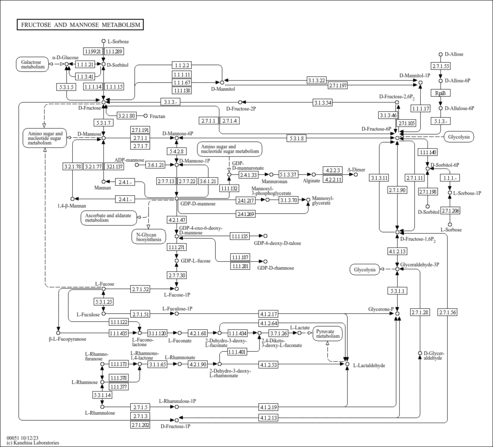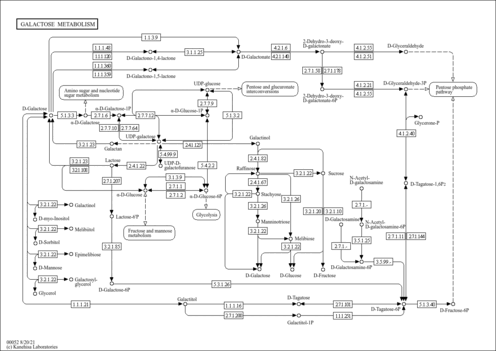| Record Information |
|---|
| Version | 1.0 |
|---|
| Created at | 2020-03-18 23:21:35 UTC |
|---|
| Updated at | 2020-12-07 19:06:55 UTC |
|---|
| CannabisDB ID | CDB006143 |
|---|
| Secondary Accession Numbers | Not Available |
|---|
| Cannabis Compound Identification |
|---|
| Common Name | Sorbitol |
|---|
| Description | Sorbitol, also known as D-glucitol or L-gulitol, belongs to the class of organic compounds known as sugar alcohols. These are hydrogenated forms of sugars in which the carbonyl group (aldehyde or ketone from the reducing sugar) has been reduced to a primary or secondary hydroxyl group. Sorbitol is a polyhydric alcohol with about half the sweetness of sucrose. Sorbitol occurs naturally in many plants and plant products and is also produced synthetically from glucose. As an industrial chemical, sorbitol is used in the manufacturing of sorbose, propylene glycol and ascorbic acid. It is also used as a plasticizer and stabilizer for vinyl resins, urethane resins and for other rigid foams. Sorbitol also has some pharmaceutical utility. It was formerly used as a diuretic and may still be used as a laxative and in irrigating solutions for some surgical procedures. Sorbitol is also used as a pharmaceutical or cosmetic aid. Sorbitol is used in solution form for moisture-conditioning of cosmetic creams and lotions, toothpaste, gelatins and liquid pharmaceuticals. As a food additive sorbitol functions as a sweetener, humectant, emulsifier, thickener and anticaking agent. Sorbitol is also used as a softener for candy as it acts as a sugar crystallization inhibitor (Hawley's Condensed Chemical Dictionary). As a research chemical, sorbitol is used in photometric determination of Ru (VI) and Ru(VIII) and in acid-base titration of borate (Dictionary of Organic Compounds). Sorbitol occurs widely in nature and is found in simple plants such as algae to higher order plants. Fruits of the plant family Rosacea, which include apples, pears, cherries, apricots, contain appreciable amounts of sorbitol. Particularly rich sources of sorbitol are the fruits of the Sorbus and Crataegus species. |
|---|
| Structure | |
|---|
| Synonyms | Not Available |
|---|
| Chemical Formula | C6H14O6 |
|---|
| Average Molecular Weight | 182.17 |
|---|
| Monoisotopic Molecular Weight | 182.079 |
|---|
| IUPAC Name | (3S,6S)-3,6-dimethyltridecane |
|---|
| Traditional Name | (3S,6S)-3,6-dimethyltridecane |
|---|
| CAS Registry Number | 8036-93-9 |
|---|
| SMILES | OC[C@H](O)[C@@H](O)[C@H](O)[C@H](O)CO |
|---|
| InChI Identifier | InChI=1S/C6H14O6/c7-1-3(9)5(11)6(12)4(10)2-8/h3-12H,1-2H2/t3-,4+,5-,6-/m1/s1 |
|---|
| InChI Key | FBPFZTCFMRRESA-JGWLITMVSA-N |
|---|
| Chemical Taxonomy |
|---|
| Description | Belongs to the class of organic compounds known as branched alkanes. These are acyclic branched hydrocarbons having the general formula CnH2n+2. |
|---|
| Kingdom | Organic compounds |
|---|
| Super Class | Hydrocarbons |
|---|
| Class | Saturated hydrocarbons |
|---|
| Sub Class | Alkanes |
|---|
| Direct Parent | Branched alkanes |
|---|
| Alternative Parents | Not Available |
|---|
| Substituents | - Branched alkane
- Aliphatic acyclic compound
|
|---|
| Molecular Framework | Aliphatic acyclic compounds |
|---|
| External Descriptors | Not Available |
|---|
| Ontology |
|---|
|
| Physiological effect | Health effect: |
|---|
| Disposition | Route of exposure: Source: Biological location: |
|---|
| Role | Biological role: Industrial application: |
|---|
| Physical Properties |
|---|
| State | Solid |
|---|
| Experimental Properties | | Property | Value | Reference |
|---|
| Melting Point | 11 °C | Not Available | | Boiling Point | Not Available | Not Available | | Water Solubility | 2750 mg/mL | Not Available | | logP | -2.20 | SANGSTER (1994) |
|
|---|
| Predicted Properties | [] |
|---|
| Spectra |
|---|
| EI-MS/GC-MS | Not Available |
|---|
| MS/MS | | Type | Description | Splash Key | View |
|---|
| Predicted MS/MS | Predicted LC-MS/MS Spectrum - 10V, Positive | Not Available | 2020-06-30 | View Spectrum | | Predicted MS/MS | Predicted LC-MS/MS Spectrum - 20V, Positive | Not Available | 2020-06-30 | View Spectrum | | Predicted MS/MS | Predicted LC-MS/MS Spectrum - 40V, Positive | Not Available | 2020-06-30 | View Spectrum | | Predicted MS/MS | Predicted LC-MS/MS Spectrum - 10V, Negative | Not Available | 2020-06-30 | View Spectrum | | Predicted MS/MS | Predicted LC-MS/MS Spectrum - 20V, Negative | Not Available | 2020-06-30 | View Spectrum | | Predicted MS/MS | Predicted LC-MS/MS Spectrum - 40V, Negative | Not Available | 2020-06-30 | View Spectrum |
|
|---|
| NMR | Not Available |
|---|
| Pathways |
|---|
| Pathways | | Name | SMPDB/Pathwhiz | KEGG | | Fructose and Mannose Degradation |    |  | | Galactose Metabolism |    |  | | Fructosuria |    | Not Available | | Fructose intolerance, hereditary |    | Not Available | | Galactosemia |    | Not Available |
|
|---|
| Protein Targets |
|---|
| Enzymes | Not Available |
|---|
| Transporters | Not Available |
|---|
| Metal Bindings | Not Available |
|---|
| Receptors | |
|---|
| Transcriptional Factors | Not Available |
|---|
| Concentrations Data |
|---|
| Not Available |
|---|
| External Links |
|---|
| HMDB ID | Not Available |
|---|
| DrugBank ID | Not Available |
|---|
| Phenol Explorer Compound ID | Not Available |
|---|
| FoodDB ID | Not Available |
|---|
| KNApSAcK ID | Not Available |
|---|
| Chemspider ID | Not Available |
|---|
| KEGG Compound ID | Not Available |
|---|
| BioCyc ID | Not Available |
|---|
| BiGG ID | Not Available |
|---|
| Wikipedia Link | Not Available |
|---|
| METLIN ID | Not Available |
|---|
| PubChem Compound | Not Available |
|---|
| PDB ID | Not Available |
|---|
| ChEBI ID | Not Available |
|---|
| References |
|---|
| General References | Not Available |
|---|

